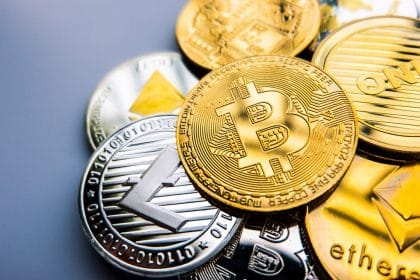Cryptocurrency can transform the way we exchange goods and services, but establishing a baseline sense of stability is a prerequisite to the expansion of this technology.
For the better part of the last decade, cryptocurrencies have captivated the minds of investors interested in applying the latest technologies to the age-old concept of money. Through blockchain technology, cryptocurrencies have promised to be a more egalitarian medium of exchange uniquely tailored to the needs of a globalized, twenty-first-century economy. Unconstrained by the whims of monetary policy, cryptocurrency was envisioned to transcend national boundaries and safeguard against fraud and theft.So far, this promise has been matched in investor confidence and enthusiasm. While the value of gold often sees boosts during times of economic crisis, the currency that has rallied the most over the past year is in fact a cryptocurrency. Bitcoin (BTC) has seen a nearly 700 percent increase in value since the start of the pandemic (and may be higher by the time you read this) and has continued to rally.But crypto’s biggest strength – the fact that it is not fiat money or currency whose value is maintained and assured by centralized monetary policy –is also its biggest weakness. Cryptocurrency volatility is significant, rivaling even the most mercurial commodities. With properties that make it similar to gold, Bitcoin still has the tendency to fluctuate simply due to the perceived value and its speculative nature.Cryptocurrency can transform the way we exchange goods and services, but establishing a baseline sense of stability is a prerequisite to the expansion of this technology. This reality has caused investors like me to explore more secure and stable digital currencies. One form of crypto that has proven extremely effective at its outset is a new Stablecoin called Frax.Currently, most stablecoins use 100% collateralization to maintain market stability (such as USDT), a method that has proven to be inefficient and fraught with auditing issues. Frax, on the other hand, is the first fractional-reserve Stablecoin that uses an algorithm to dynamically adjust the collateralization ratio. By functioning as a fractional-reserve stablecoin, Frax has maintained its peg to 1 USD even through periods of high volatility. The success of a project like FRAX would have far-reaching implications, especially in the world of decentralized finance (DeFi). Theoretically, Frax could become the reserve currency of DeFi the way the USD is the reserve currency of traditional finance.As a result, Frax users will be able to reliably trade this Stablecoin globally without concerns over privacy, fluctuations in the global markets, or uncertainties about the value. Further, Frax Shares (FXS) is an investment token that will stay true to the basic principles of the market. That is, the more people who mint Frax, the higher the value of FXS due to the algorithmically required FXS burn. This is in contrast to existing forms of crypto, which are both mediums of payment and speculative instruments in the same cryptocurrency, and as a result can fluctuate wildly based on perceived value. Ultimately, enhanced stability will broaden the use cases for crypto globally.Throughout my investment career, I have worked to make cryptocurrency more accessible to mass audiences. As crypto grows in popularity, it’s imperative that we pursue alternative forms that provide more stability for investors and consumers alike, especially at a time when we see markets in flux and uncertainties surrounding fiat currencies worldwide.The dollar is the world’s most influential currency in large part because it is among the most stable. Investors and governments from around the world seek out the US dollar because of the strong global faith in the United States government and economy. For cryptocurrency to gain in influence and accessibility in the coming decades, innovators will need to continue to develop mechanisms like Frax that ensure crypto enjoys the same long-run credibility and stability.








